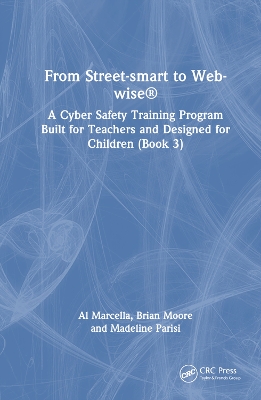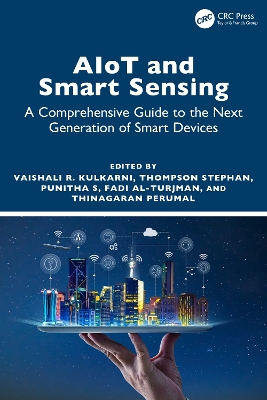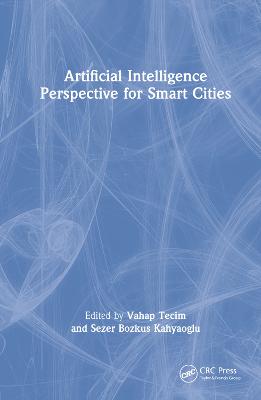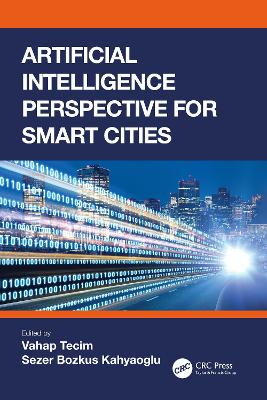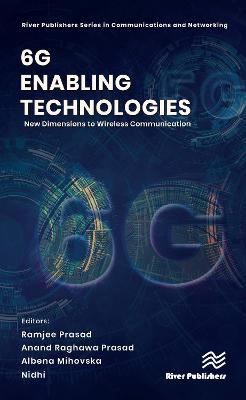Network Evolution and Applications
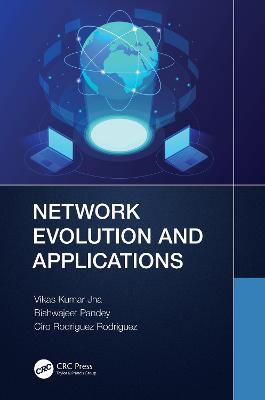 portes grátis
portes grátis
Network Evolution and Applications
Jha, Vikas Kumar; Rodriguez, Ciro; Pandey, Bishwajeet Kumar
Taylor & Francis Ltd
11/2022
240
Dura
Inglês
9781032299563
15 a 20 dias
Descrição não disponível.
Authors' biographies Preface 1. Communication Network at a Glance Abbreviations Used 1.0 Introduction 1.1 Types of Networks 1.1.1 Based on spread of network 1.1.2 Based on type of connection 1.1.3 Based on type of signals 1.2 Network Topology 1.2.1 Bus Topology 1.2.2 Star Topology 1.2.3 Mesh Topology 1.2.4 Ring Topology 1.2.5 Hybrid Topology 1.3 Data Communication 1.3.1 Use Cases of Data Communication 1.3.2 Different Data Communication Mode 1.3.3 Components of Data Communication 1.3.4 Cellular or Mobile Communication 1.3.5 Internet 1.4 International Forums and Organization 1.4.1 ITU-T 1.4.2 IANA 1.4.3 IETF 1.4.4 3GPP 1.5 Conclusion References 2. Reference Model and Protocol Suite Abbreviations Used 2.0 Introduction 2.1 Why Standard Protocol Architecture? 2.2 Logistics of Communication 2.2.1 Protocols 2.2.2 Layers 2.2.3 Service 2.2.4 Client/Server Method 2.2.5 Addressing 2.2.6 Reliability 2.2.7 Flow Control Mechanism 2.2.8 Connection Oriented - Connection less 2.3 TCP/IP 2.3.1 Layered Architecture 2.3.2 TCP/IP Operation 2.4 OSI 2.4.1 Layered Architecture 2.4.2 OSI Operation 2.4.3 Comparing TCP/IP and OSI model 2.5 IP Address 2.5.1 IPv4 Address 2.5.2 IPv6 Address 2.6 Conclusion References 3. The First Internet: Project ARPANET Abbreviations Used 3.0 Introduction 3.1 ARPANET 3.1.1 A brief history of ARPANET 3.1.2 Sites of ARPANET 3.1.3 Motivations 3.1.4 ARPANET Topology 3.1.5 ARPANET Network Operation 3.2 Reception, Success and Achievement 3.2.1 Growth of ARPANET 3.2.2 Impact on Computer Resource & Communication Technology 3.3 Conclusion References 4. Ethernet Abbreviations Used 4.0 Introduction 4.1 ALOHA 4.1.1 The ALOHA System - Architecture 4.1.2 ALOHANET 4.1.3 Pure and Slotted: ALOHA Protocols 4.2 Ethernet History 4.2.1 Experimental Ethernet 4.2.2 Ethernet Developments in history 4.3 Ethernet Concepts 4.3.1 Physical Layers of Ethernet 4.3.2 Medium Access Control 4.3.3 Ethernet Frame 4.4 Conclusion References 5. Journey of Cables: From Coppers to Optical Fiber Abbreviations used 5.0 Introduction 5.1 History of Telecommunication Cables 5.1.1 POTS 5.1.2 Development of Ethernet 5.1.3 From Analogue to Digital 5.1.4 Transatlantic Cables 5.2 Copper Cables 5.2.1 Twisted Pairs 5.2.2 Coaxial Cables 5.2.3 Hybrid Cables 5.3 Optical Fiber Cables 5.3.1 Single Mode Fiber 5.3.2 Multi-Mode Fiber 5.4 Conclusion References 6. Wireless Networks Abbreviations Used 6.0 Introduction 6.1 Wireless Networks & Communication 6.1.1 Wireless Telegraphy 6.1.2 Mobile Telephone Service - Pre Cellular 6.1.3 Mobile Communication - Cellular 6.1.4 Wi-Fi 6.1.5 WiMAX 6.1.6 ZigBee 6.1.7 Bluetooth 6.2 Architecture of Wireless Networks 6.2.1 The OSI reference model 6.2.2 Different Types of Wireless Network 6.2.3 Wireless Network Topologies 6.2.4 Wireless Service Modes 6.3 Conclusion References 7. Circuit Switching & Packet Switching Abbreviations Used 7.0 Introduction 7.1 Switched Network 7.2 Circuit Switching 7.2.1 Manual Switching 7.2.2 Automatic Switching 7.3 Packet Switching 7.3.1 Datagram 7.3.2 Virtual Circuit 7.4 Conclusion References 8 MPLS Abbreviations Used 8.0 Introduction 8.1 MPLS Background: A Historical view 8.1.1 IP Switching Technology 8.1.2 TAG Switching 8.1.3 IBM ARIS 8.1.4 MPLS 8.2 Architecture of MPLS 8.2.1 MPLS Terminologies 8.2.2 MPLS Label Header 8.2.3 MPLS Operations 8.2.4 Label Operations 8.3 Conclusion References 9. Metro Ethernet Abbreviations Used 9.0 Introduction 9.1 Metro Ethernet 9.1.1 MEF: Carrier Ethernet Terminologies 9.1.2 MEF: Carrier Ethernet Services 9.2 Conclusion References 10. Modern Internet Abbreviations Used 10.0 Introduction 10.1 Principles of Modern Internet Architecture 10.1.1 Heterogeneity 10.1.2 Scalability 10.1.3 Simplicity 10.1.4 Robustness and Adaptability 10.1.5 Loose Coupling 10.1.6 Naming and Addressing 10.1.7 Distributed Architecture 10.2 The Web 10.2.1 Web vs. Internet 10.2.2 Web 2.0 10.3 Conclusion References 11. Software Defined Networking Abbreviations Used 11.0 Introduction 11.1 Architecture of SDN 11.1.1 Components of SDN 11.1.2 Traffic flow in SDN 11.2 Open Flow Protocol 11.3 Conclusion References 12: Cloud Computing Abbreviations Used 12.0 Introduction 12.1 Background: 12.2 Benefits and limitations of the cloud: 12.2.1 Benefits 12.2.2 Limitations 12.3 Deployment Models: 12.4 Service models 12.5 Featured Providers 12.6 Architecture 12.7 Cloud Risks: 12.8 Data centers as support for Cloud Computing 12.9 Conclusion References 13: Internet of Things Abbreviations Used 13.0 Introduction 13.1 IoT world background 13.1.1 Communication models of IoT 13.1.2 Communications device to device 13.2 Intercommunication Between Things 13.2.1 Protocols used to transmit data 13.2.2 Embedded Vision Systems 13.2.3 Webinars On Embedded / Integrated Vision Systems 13.2.4 Machine Learning 13.2.5 Arduino 13.2.6 The internet of things as an ally of digital transformation. 13.3 Internet of Things 2.0: The next step towards industry 4.0 13.4 IoT applications 13.4.1 Business 13.4.2 Vehicle fleets for logistics 13.4.3 IoT applications for home use 13.4.4 Growth of the number of connected devices 13.4.5 IoT in agriculture: Smart Farming 13.4.6 Agriculture and Livestock 13.4.7 IoT in medicine IoMT: Smart Health 13.4.8 IoT in energy management: Smart Energy 13.4.9 IIoT, the industrial internet of things 13.5 Advantages of IoT: 13.6 Limitations of IoT: 13.6.1 Considerations To Integrate IoT Technologies 13.6.2 Challenges And Challenges In Organizations 13.6.3 IoT security 13.7 Future of IoT 13.8 Conclusions References 14. Next Generation IoT and the World of Sensors Abbreviations Used 14.0 Introduction 14.1 The World of Sensors 14.2 Functions of the sensors that incorporate the objects with IoT technology 14.3 The next generation Internet of things 14.4 Opportunities, Challenges, and Solutions 14.5 Conclusions References 15. Artificial Intelligence and Networking Abbreviations Used 15.0 Introduction 15.1 What is AI? 15.1.1 Machine Learning 15.1.2 Neural Network 15.1.3 Deep Learning 15.2 How AI can transform Computer Networks? 15.2.1 Intent-Based Networking 15.2.2 AI in Software Defined Networking 15.2.3 AI in the Telcom Networks 15.2.4 AI in Cyber Security 15.3 Conclusion References
Este título pertence ao(s) assunto(s) indicados(s). Para ver outros títulos clique no assunto desejado.
Wireless Networks;Artificial Intelligence;Internet of Things;Cloud Computing;Sensors;Multiprotocol Label Switching;Packet Filtering;Carrier Ethernet;Advanced Research Projects Agency Network;SDN Controller;SDN;IoT Device;IP Packet;MPLS Network;OSI Model;IoT Application;IP Address;IoT Technology;Twisted Pair Cables;Packet Switching Data Network;MPLS;UTP;LAN Technology;IPv4 Address;UTP Cable;Metro Ethernet;Address Space;Atm Switch;MPLS Label;Label Stack;SDN Architecture
Authors' biographies Preface 1. Communication Network at a Glance Abbreviations Used 1.0 Introduction 1.1 Types of Networks 1.1.1 Based on spread of network 1.1.2 Based on type of connection 1.1.3 Based on type of signals 1.2 Network Topology 1.2.1 Bus Topology 1.2.2 Star Topology 1.2.3 Mesh Topology 1.2.4 Ring Topology 1.2.5 Hybrid Topology 1.3 Data Communication 1.3.1 Use Cases of Data Communication 1.3.2 Different Data Communication Mode 1.3.3 Components of Data Communication 1.3.4 Cellular or Mobile Communication 1.3.5 Internet 1.4 International Forums and Organization 1.4.1 ITU-T 1.4.2 IANA 1.4.3 IETF 1.4.4 3GPP 1.5 Conclusion References 2. Reference Model and Protocol Suite Abbreviations Used 2.0 Introduction 2.1 Why Standard Protocol Architecture? 2.2 Logistics of Communication 2.2.1 Protocols 2.2.2 Layers 2.2.3 Service 2.2.4 Client/Server Method 2.2.5 Addressing 2.2.6 Reliability 2.2.7 Flow Control Mechanism 2.2.8 Connection Oriented - Connection less 2.3 TCP/IP 2.3.1 Layered Architecture 2.3.2 TCP/IP Operation 2.4 OSI 2.4.1 Layered Architecture 2.4.2 OSI Operation 2.4.3 Comparing TCP/IP and OSI model 2.5 IP Address 2.5.1 IPv4 Address 2.5.2 IPv6 Address 2.6 Conclusion References 3. The First Internet: Project ARPANET Abbreviations Used 3.0 Introduction 3.1 ARPANET 3.1.1 A brief history of ARPANET 3.1.2 Sites of ARPANET 3.1.3 Motivations 3.1.4 ARPANET Topology 3.1.5 ARPANET Network Operation 3.2 Reception, Success and Achievement 3.2.1 Growth of ARPANET 3.2.2 Impact on Computer Resource & Communication Technology 3.3 Conclusion References 4. Ethernet Abbreviations Used 4.0 Introduction 4.1 ALOHA 4.1.1 The ALOHA System - Architecture 4.1.2 ALOHANET 4.1.3 Pure and Slotted: ALOHA Protocols 4.2 Ethernet History 4.2.1 Experimental Ethernet 4.2.2 Ethernet Developments in history 4.3 Ethernet Concepts 4.3.1 Physical Layers of Ethernet 4.3.2 Medium Access Control 4.3.3 Ethernet Frame 4.4 Conclusion References 5. Journey of Cables: From Coppers to Optical Fiber Abbreviations used 5.0 Introduction 5.1 History of Telecommunication Cables 5.1.1 POTS 5.1.2 Development of Ethernet 5.1.3 From Analogue to Digital 5.1.4 Transatlantic Cables 5.2 Copper Cables 5.2.1 Twisted Pairs 5.2.2 Coaxial Cables 5.2.3 Hybrid Cables 5.3 Optical Fiber Cables 5.3.1 Single Mode Fiber 5.3.2 Multi-Mode Fiber 5.4 Conclusion References 6. Wireless Networks Abbreviations Used 6.0 Introduction 6.1 Wireless Networks & Communication 6.1.1 Wireless Telegraphy 6.1.2 Mobile Telephone Service - Pre Cellular 6.1.3 Mobile Communication - Cellular 6.1.4 Wi-Fi 6.1.5 WiMAX 6.1.6 ZigBee 6.1.7 Bluetooth 6.2 Architecture of Wireless Networks 6.2.1 The OSI reference model 6.2.2 Different Types of Wireless Network 6.2.3 Wireless Network Topologies 6.2.4 Wireless Service Modes 6.3 Conclusion References 7. Circuit Switching & Packet Switching Abbreviations Used 7.0 Introduction 7.1 Switched Network 7.2 Circuit Switching 7.2.1 Manual Switching 7.2.2 Automatic Switching 7.3 Packet Switching 7.3.1 Datagram 7.3.2 Virtual Circuit 7.4 Conclusion References 8 MPLS Abbreviations Used 8.0 Introduction 8.1 MPLS Background: A Historical view 8.1.1 IP Switching Technology 8.1.2 TAG Switching 8.1.3 IBM ARIS 8.1.4 MPLS 8.2 Architecture of MPLS 8.2.1 MPLS Terminologies 8.2.2 MPLS Label Header 8.2.3 MPLS Operations 8.2.4 Label Operations 8.3 Conclusion References 9. Metro Ethernet Abbreviations Used 9.0 Introduction 9.1 Metro Ethernet 9.1.1 MEF: Carrier Ethernet Terminologies 9.1.2 MEF: Carrier Ethernet Services 9.2 Conclusion References 10. Modern Internet Abbreviations Used 10.0 Introduction 10.1 Principles of Modern Internet Architecture 10.1.1 Heterogeneity 10.1.2 Scalability 10.1.3 Simplicity 10.1.4 Robustness and Adaptability 10.1.5 Loose Coupling 10.1.6 Naming and Addressing 10.1.7 Distributed Architecture 10.2 The Web 10.2.1 Web vs. Internet 10.2.2 Web 2.0 10.3 Conclusion References 11. Software Defined Networking Abbreviations Used 11.0 Introduction 11.1 Architecture of SDN 11.1.1 Components of SDN 11.1.2 Traffic flow in SDN 11.2 Open Flow Protocol 11.3 Conclusion References 12: Cloud Computing Abbreviations Used 12.0 Introduction 12.1 Background: 12.2 Benefits and limitations of the cloud: 12.2.1 Benefits 12.2.2 Limitations 12.3 Deployment Models: 12.4 Service models 12.5 Featured Providers 12.6 Architecture 12.7 Cloud Risks: 12.8 Data centers as support for Cloud Computing 12.9 Conclusion References 13: Internet of Things Abbreviations Used 13.0 Introduction 13.1 IoT world background 13.1.1 Communication models of IoT 13.1.2 Communications device to device 13.2 Intercommunication Between Things 13.2.1 Protocols used to transmit data 13.2.2 Embedded Vision Systems 13.2.3 Webinars On Embedded / Integrated Vision Systems 13.2.4 Machine Learning 13.2.5 Arduino 13.2.6 The internet of things as an ally of digital transformation. 13.3 Internet of Things 2.0: The next step towards industry 4.0 13.4 IoT applications 13.4.1 Business 13.4.2 Vehicle fleets for logistics 13.4.3 IoT applications for home use 13.4.4 Growth of the number of connected devices 13.4.5 IoT in agriculture: Smart Farming 13.4.6 Agriculture and Livestock 13.4.7 IoT in medicine IoMT: Smart Health 13.4.8 IoT in energy management: Smart Energy 13.4.9 IIoT, the industrial internet of things 13.5 Advantages of IoT: 13.6 Limitations of IoT: 13.6.1 Considerations To Integrate IoT Technologies 13.6.2 Challenges And Challenges In Organizations 13.6.3 IoT security 13.7 Future of IoT 13.8 Conclusions References 14. Next Generation IoT and the World of Sensors Abbreviations Used 14.0 Introduction 14.1 The World of Sensors 14.2 Functions of the sensors that incorporate the objects with IoT technology 14.3 The next generation Internet of things 14.4 Opportunities, Challenges, and Solutions 14.5 Conclusions References 15. Artificial Intelligence and Networking Abbreviations Used 15.0 Introduction 15.1 What is AI? 15.1.1 Machine Learning 15.1.2 Neural Network 15.1.3 Deep Learning 15.2 How AI can transform Computer Networks? 15.2.1 Intent-Based Networking 15.2.2 AI in Software Defined Networking 15.2.3 AI in the Telcom Networks 15.2.4 AI in Cyber Security 15.3 Conclusion References
Este título pertence ao(s) assunto(s) indicados(s). Para ver outros títulos clique no assunto desejado.
Wireless Networks;Artificial Intelligence;Internet of Things;Cloud Computing;Sensors;Multiprotocol Label Switching;Packet Filtering;Carrier Ethernet;Advanced Research Projects Agency Network;SDN Controller;SDN;IoT Device;IP Packet;MPLS Network;OSI Model;IoT Application;IP Address;IoT Technology;Twisted Pair Cables;Packet Switching Data Network;MPLS;UTP;LAN Technology;IPv4 Address;UTP Cable;Metro Ethernet;Address Space;Atm Switch;MPLS Label;Label Stack;SDN Architecture


